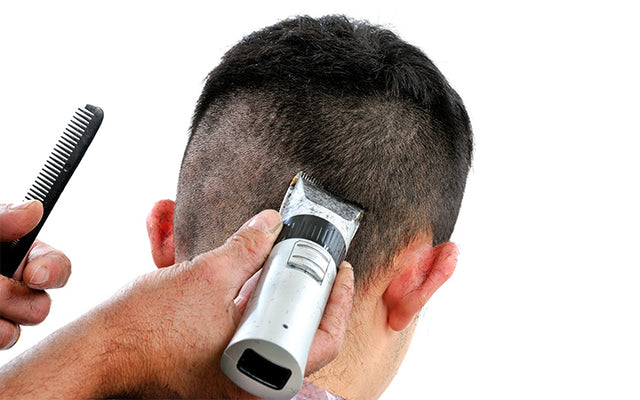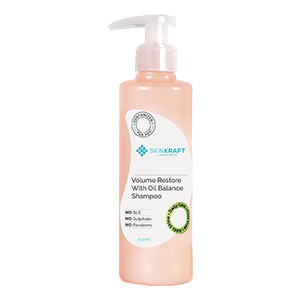Do you believe in the common notion that shaving off hair makes them grow back thicker? Many of you might have had the experience of a fully shaved head as a kid, with the hope of growing stronger and more voluminous hair.
But does shaving off really have any effects on your hair regrowth? What does research say? Read this article to know more about the truths and myths of shaving hair.
Highlights:
What Shaving Actually Does?
All hair on your body has two distinct parts:
1. Hair root
This contains the living part of the hair and goes deep down underneath your skin. Hair root is surrounded by the hair follicle, which has nerves and blood vessels around it. It is within the follicle that new hair cells are formed, that contribute to the growing length of your hair.
2. Hair shaft
Only this part of your hair is exposed above the surface of your skin and it is composed of dead and hardened cells lubricated by the sebaceous glands around the hair follicles. [1]
When you are shaving any part of your body with a razor, you are only removing the hair shaft, that is the part sticking above your skin. The hair follicle with the actively dividing hair cells is still present inside your skin, which leads to the regrowth of hair post shaving. Since the hair growing out is only an extension of the hair inside the follicle, logically there can be no change in the regrown hair.

How To Shave Your Head Safely?
If you are shaving your head at home all by yourself, here are a few tips from the experts that you should follow:
1. The best time to shave is right after a shower. This makes your hair easier to cut and gives you a smooth shave.
2. You should trim your hair to a shorter, manageable length using a trimmer, before using a razor.
3. Always use a shaving gel or cream. This softens up your hair and prevents irritations or razor burns.
4. Check that your razor blades are sharp enough. If you need to go over an area multiple times to get a clean shave, it is time to change the blades.
5. Work along the contours of your head and do not apply too much pressure to avoid nicks and cuts on your head. Glide the razor through and it will do its work if it is sharp enough.
6. Go with the grain of the hair for the first time, that is shave from back to front on the top of your crown and downwards towards the sides and the back. The grain of the hair is the direction your hair falls naturally.
7. If you want a closer shave, you can use the razor against the grain of your hair during the second pass. Do not forget to reapply the shaving gel or cream before the second pass.
8. Run a hand over the area shaved to make sure you have not missed a patch of hair here and there.
9. It is an absolute must to moisturise your head with an aftershave gel or lotion to prevent infections and to keep your scalp hydrated.
Does Shaving Off Hair Make It Grow Thicker?
Despite the popular belief that shaving off your hair will make your hair grow back thicker, there is no evidence to prove it. Scientific research has shown time and again that there is no significant change in the width of hair or rate of hair regrowth after you have shaved. A clinical trial conducted in the year 1928 precisely proved that shaving has no effects on hair regrowth, as the hair grows from the follicle already present within your skin. [2]
Our natural hair has thin, tapering ends. But when we shave, the ends become blunt which may make the hair look wider. Also the newly emerging hair post shaving is close to the skin surface making it appear darker in contrast with the skin colour. This is often wrongly perceived as thicker hair regrowth after shaving.
Also the newly emerged part of the hair has not yet been exposed to the detrimental effects of sunlight and pollutants, which may be another reason for it to appear darker than your hair was before shaving.
If you get excessive hair on your body despite regular shaving, it may indicate hormonal imbalance or other medical disorders, especially in case of women. You may want to consult a doctor to be on the safe side.

What Are The Other Benefits Of Shaving Head?
Even though shaving your head cannot make your hair more voluminous, it can have a bunch of other benefits:
- It gives you the opportunity to clean off the dirt and pollutants from the scalp and exfoliate it.
- A shaved scalp is more accessible for application of topical medicines, if you have a skin condition that has affected your scalp.
- Shaving can also help to prevent severe dandruff due to conditions like seborrheic dermatitis.
- Last but not the least, you save a lot of time and money spent on maintaining and styling your hair. Also with a clean shaved head you do not have to constantly worry about hair loss. A fully shaved scalp is quite a fashion trend among men and women across the globe.
Are There Any Side Effects?
If you are shaving your head completely for the very first time, you might need some time to get used to the look and feel of it. Some adverse effects of shaving your head may be:
- Your scalp might feel dry or itchy. Use a suitable moisturizer like a scalp butter or some virgin coconut oil to keep your scalp hydrated and protected from infections.
- You may experience some nicks and cuts while shaving your head. Use an antiseptic lotion to minimise the risk of infection or inflammation.
- You may observe a few ingrown hair or bumps on your head after a couple of shaves. Appropriate pre-shave gels or foams and a sharp razor blade is a must to prevent them.
- Your bare head if exposed to the elements for long may cause adverse side effects on the skin of your scalp. Wear a hat or bandana to protect your scalp from constant exposure to the sun, dehydration or pollutants.
Does Your Hair Grow Back Healthier If You Shave Your Head?
If shaving made your hair grow back thicker every time, the problem of thinning hair and baldness could have been solved by simply shaving your head multiple times. But we know for sure that is not the case. Therefore shaving your head or not is completely a personal choice.
Your genes play the biggest role in determining how much hair you have on your crown and how much of it you lose over time. A complex interplay of your genetic makeup, hormonal levels and environmental factors are the ones that determine your hair growth.
Age can also be an important factor that determines the thickness and volume of hair in both men and women. For example, your body hair may get darker when you hit puberty. On the other hand, women at the age of menopause often experience excessive hair loss from their head and may require nutritional supplements to prevent it. [3]
SkinKraft Tip:
Minimise usage of styling tools like curling irons or blow dryer to avoid damage of hair due to heat. Eat right as your hair has a high content of protein. So to keep it healthy, you should consume enough fresh fruits, vegetables, legumes, fish, etc. You can try using Minoxidil post consultation with your doctor. Minoxidil stimulates the hair follicles resulting in enhanced hair growth and reduction of hair loss. [4]
Wrapping Up
Although you might have believed all along that shaving your head might be your one way ticket to getting a thicker mane, it is clearly not the case. Your hair might only appear thicker after a shave due to a growing stubble of blunt ends. But it is totally a personal choice if you still want to go for a full shave your crown. Afterall it is a growing fashion trend across the globe! So if your locks are going wild or you want a brave new look, go ahead and get a full head shave.
Recommended Products
Was this Article helpful?
- Least helpful
- Most helpful











